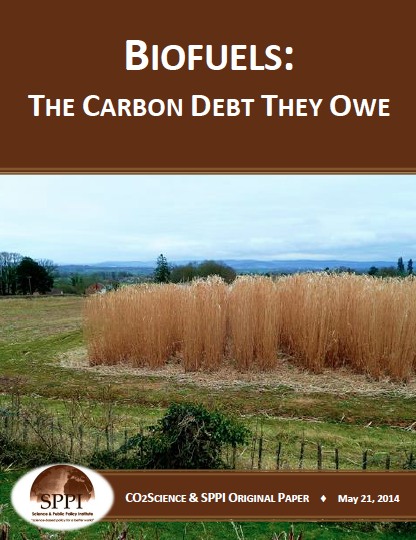News / Science & Technology
Biofuels: The Carbon Debt They Owe

In an article entitled "Land Clearing and the Biofuel Carbon Debt," Fargione et al. (2008) explore what happens when non-agricultural lands are cleared for the growing of biofuel crops. In addition to the destruction of precious habitat needed to support what could be called "wild nature," this process releases large amounts of CO2 to the atmosphere due to the burning and microbial decomposition of organic carbon stored in plant biomass and soils. And this initial "carbon debt" must be repaid before there is any net reduction in CO2 emissions from the use of the biofuel crops grown on the newly-cleared land.
As for just how big initial carbon debts can be, Fargione et al. made detailed calculations for six different scenarios of "native habitat conversion," which include "Brazilian Amazon to soybean biodiesel, Brazilian Cerrado to soybean biodiesel, Brazilian Cerrado to sugarcane ethanol, Indonesian or Malaysian lowland tropical rainforest to palm biodiesel, Indonesian or Malaysian peatland tropical rainforest to palm biodiesel, and U.S. central grassland to corn ethanol." These conversions, in their words, would release "17 to 420 times more CO2 than the annual greenhouse gas reductions that these biofuels would provide by displacing fossil fuels." And they note the huge carbon debts they produce "would not be repaid by the annual carbon repayments from biofuel production for decades or centuries."
As for just how big initial carbon debts can be, Fargione et al. made detailed calculations for six different scenarios of "native habitat conversion." These conversions would release "17 to 420 times more CO2 than the annual greenhouse gas reductions that these biofuels would provide by displacing fossil fuels."
And they note the huge carbon debts they produce "would not be repaid by the annual carbon
repayments from biofuel production for decades or centuries." Much the same conclusions are reached by Searchinger et al. (2008), who write earlier studies of the benefits of substituting biofuels for gasoline "failed to count the carbon emissions that occur as farmers worldwide respond to higher prices and convert forest and grassland to new cropland to replace the grain (or cropland) diverted to biofuels." And by using a worldwide agricultural model to estimate emissions from such land-use changes, they find "corn-based ethanol, instead of producing a 20% savings, nearly doubles greenhouse emissions over 30 years and increases greenhouse gases for 167 years," while "biofuels from switchgrass, if grown on U.S. corn lands, increase emissions by 50%." In light of such findings, Searchinger et al. conclude that "when farmers use today's good cropland to produce food," which is what past policy has always dictated they should do, "they help to avert [the release of] greenhouse gases from land-use change."
